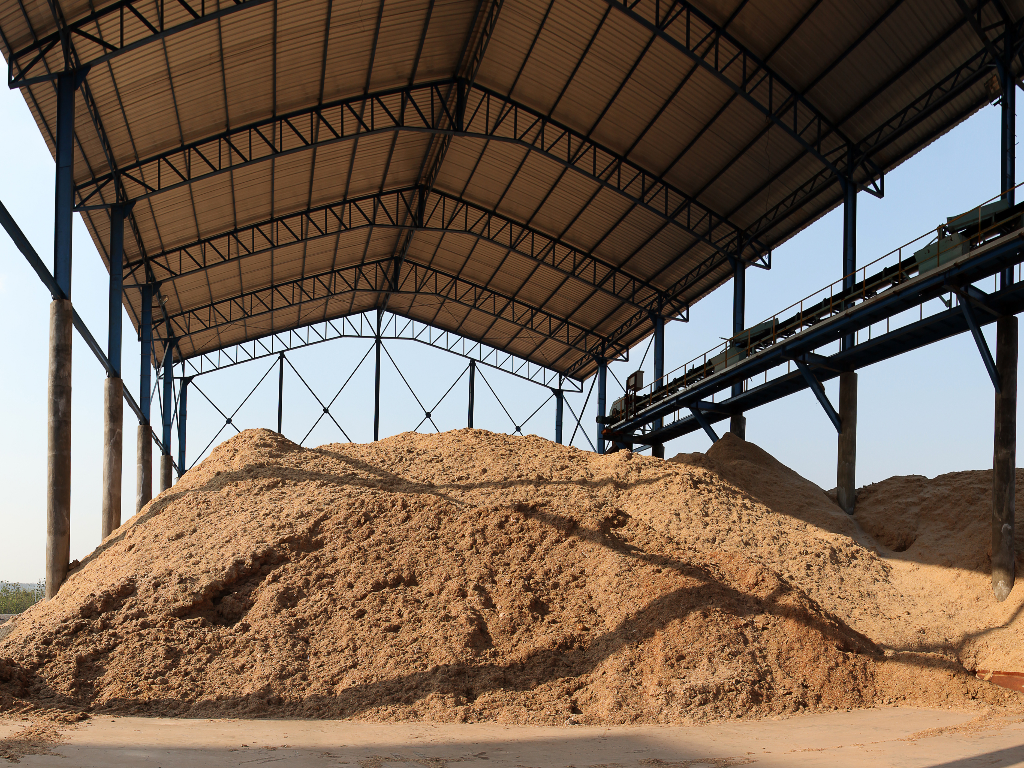By Sheela Tumaini, Kenya Sugar Board
Bagasse is the fibrous by-product left after sugarcane processing at the sugar factories, typically accounting for about 30% of the sugarcane plant. It contains 40-50% cellulose, 25-35% hemicellulose, 20-30% lignin, and 1-5% ash and other extractives like wax, which are essential for giving bagasse its structural integrity and flexibility, especially when processing it into other materials in its raw fibrous form.
Factories usually use this by-product as fuel for their boilers, but much of it remains unused. Through the years, sugarcane bagasse has gained attention as a natural, biodegradable material with chemical components that can serve as versatile ingredients in composite materials. Research into converting bagasse into various products is driven by the need for low pollution levels, the growing eco-friendly movement, and the desire for low-cost manufacturing.
Some methods of processing bagasse in Kenya include;
- Production of briquettes by burning dried sugarcane bagasse in an oxygen-scarce environment to produce carbonized ash, which is then mixed with a binding base, shaped and dried.
- Breaking down the bagasse fiber into nano-fibers for the production of biodegradable packaging materials and biodegradable kitchenware like plates, cups and spoons.
However, internationally, the material has garnered much more diverse research for ongoing use and potential developments that can be equally adopted in the Kenyan industry. These include:
- Production of Biodegradable polyesters from sugarcane bagasse nanocellulose which are utilized to make scaffolds for bone and skin tissue engineering.
- Production of slow nutrient-releasing fertilizers, which are made by lacing activated bagasse biochar with nitrogen, phosphorus and potassium.
- Production of biofuels such as bioethanol and biodiesel through pyrolysis, using lignocellulose biomass residues from sugarcane bagasse, thus replacing fossil fuels with a green fuel substitute.
- Production of bio-absorbent material from sugarcane bagasse biochar. These materials are used for environmental remediation, such as clearing crude-oil spillages, absorbing dyes and heavy metals from water and soil.
- Extraction of micro and nano silica particles from sugarcane bagasse to obtain silicon. This is possible due to the presence of adequate silica content in sugarcane bagasse ash.
- Research is ongoing on using sugar cane bagasse for construction in the form of raw compressed blocks or by incorporating bagasse ash into cementitious composites and building materials to improve their mechanical properties.
- Bagasse has been enriched to serve as a source of animal feed, improving dietary intake. This has been achieved through fermentation by adding molasses, lactobacillus, and cellulase to the bagasse, which is then fed to ruminants and dairy cows. Additionally, bagasse powder fed to fish has also acted as a prebiotic source.
The advantage of innovations in bagasse processing as a by-product lies in its environmental impact and sustainability. Bagasse is a bulky industrial by-product; therefore, converting it into other materials is crucial for reducing product-associated hazards and pollution. This is especially evident in biofuel production, as it decreases carbon emissions by replacing fossil fuels with renewable green energy that is less harmful to the environment. The overall use of bagasse promotes environmental and corporate sustainability through environmental responsibility and overall support of the safety and employment of local communities working in bagasse processing plants. Additionally, innovations in bagasse utilization and processing are sure to transform the sugar industry, helping it expand and achieve its sustainability goals.

